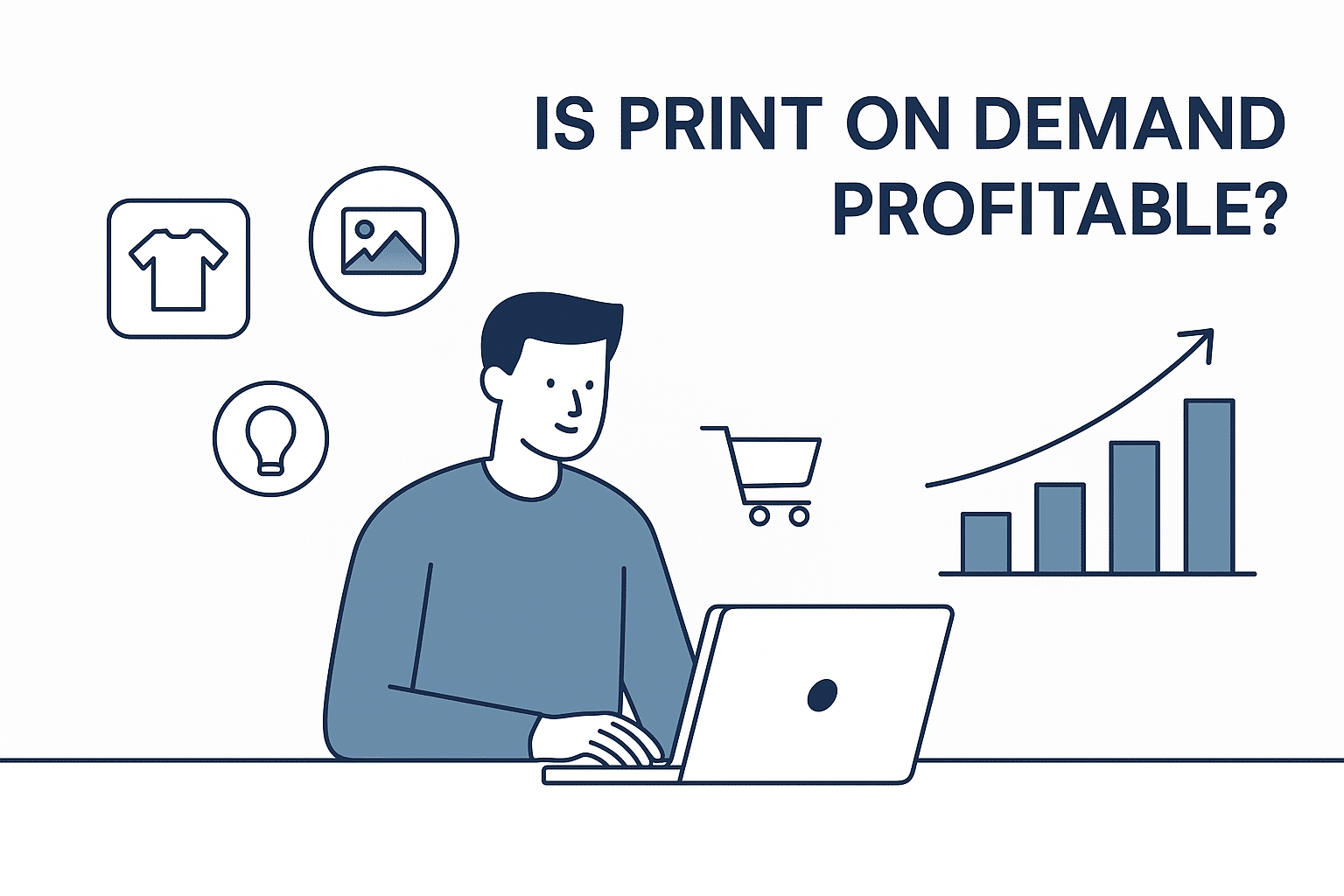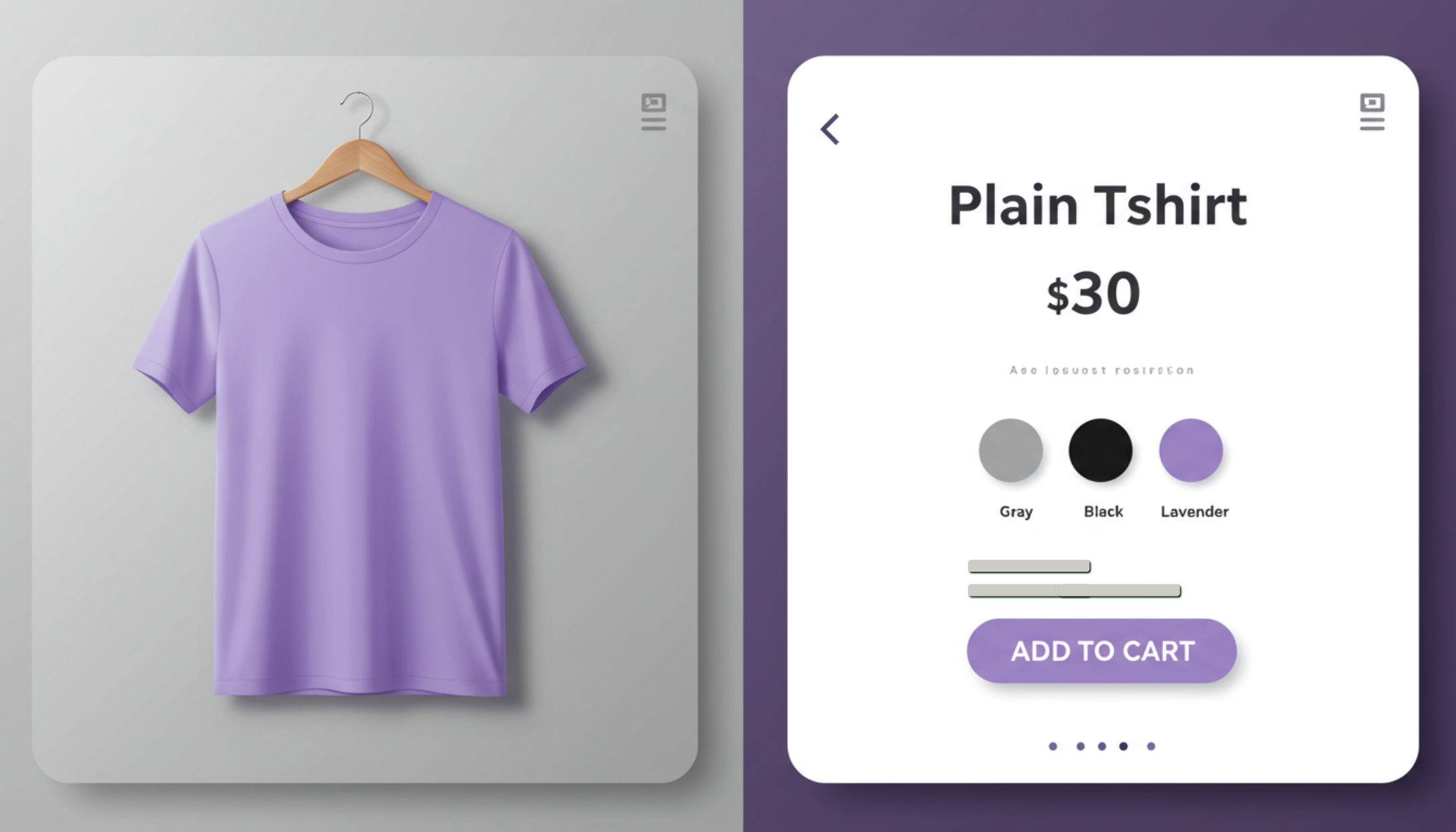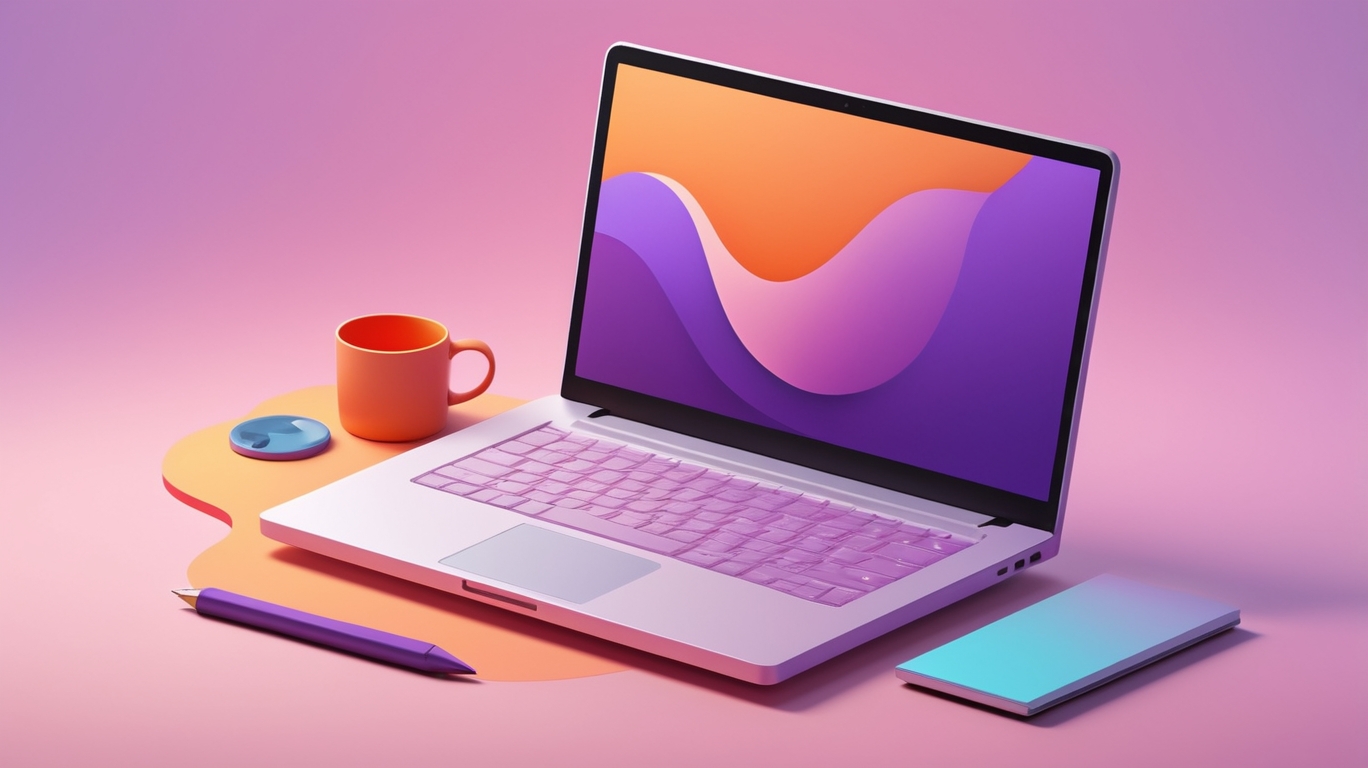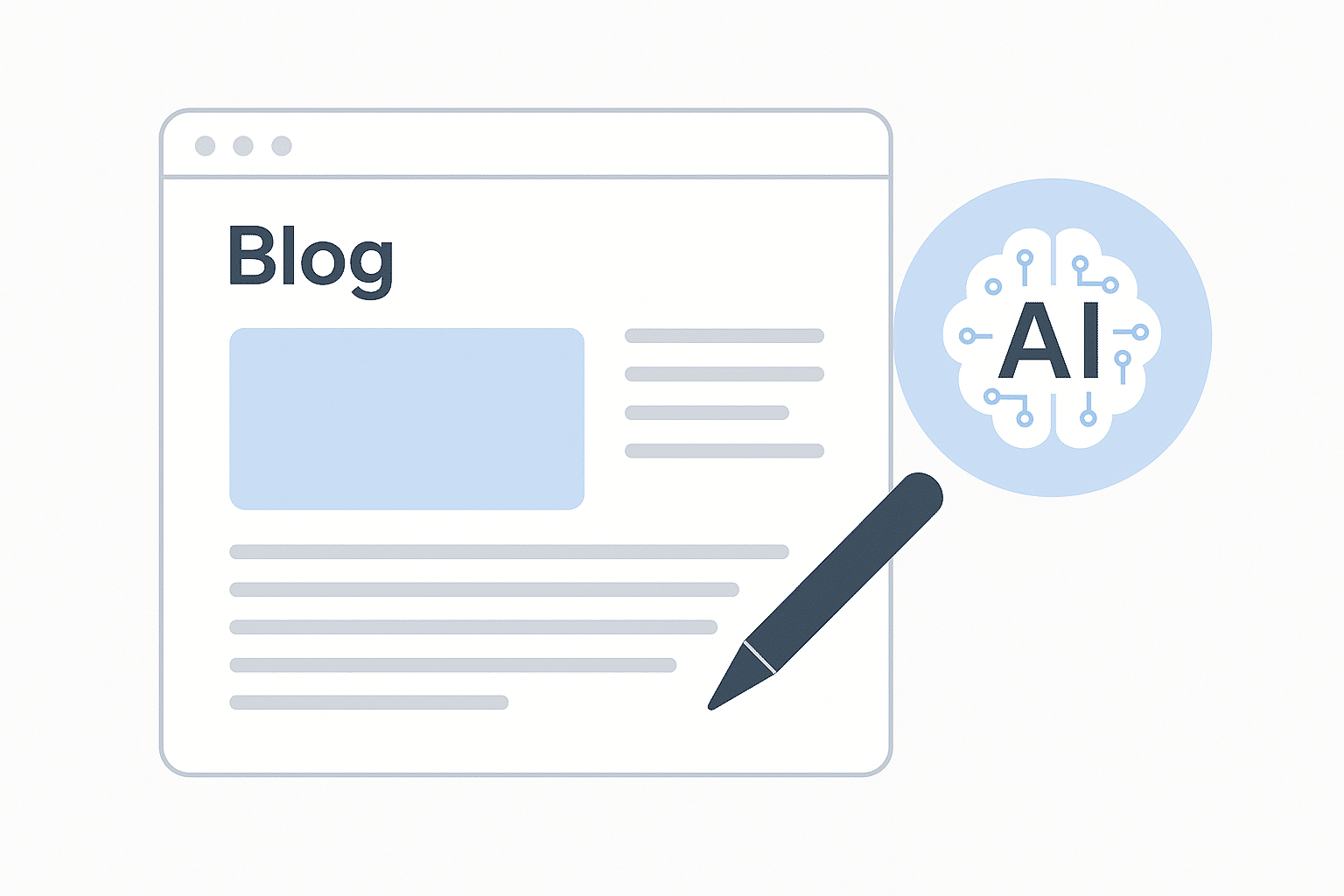Table Of Content
- Introduction
- Is Print on Demand Still Profitable in 2025?
- How Print on Demand Makes Money
- Key Factors That Affect Profitability
- Best Print on Demand Websites to Start With
- Tips to Make Print on Demand More Profitable
- Common Mistakes That Hurt Profitability
- Frequently Asked Questions (FAQs)
- Conclusion: Is POD Right for You?
Introduction
In 2025, with more sellers entering the space and competition heating up, one question keeps coming up: Is print on demand still profitable?
The short answer is — yes, it can be. But like any business model, the how matters just as much as the what.
Print on demand (POD) has become one of the most popular ways to start an online business — especially for beginners looking to build something without a huge upfront investment. You don’t need inventory, you don’t need to handle shipping, and you can launch a store from your laptop. Sounds ideal, right?
In this blog, we’ll break down what profitability really looks like in the print on demand world, what affects your chances of success, and which platforms are best for getting started.📌 New to print on demand? Start with our beginner’s guide here before diving in.
Is Print on Demand Still Profitable in 2025?
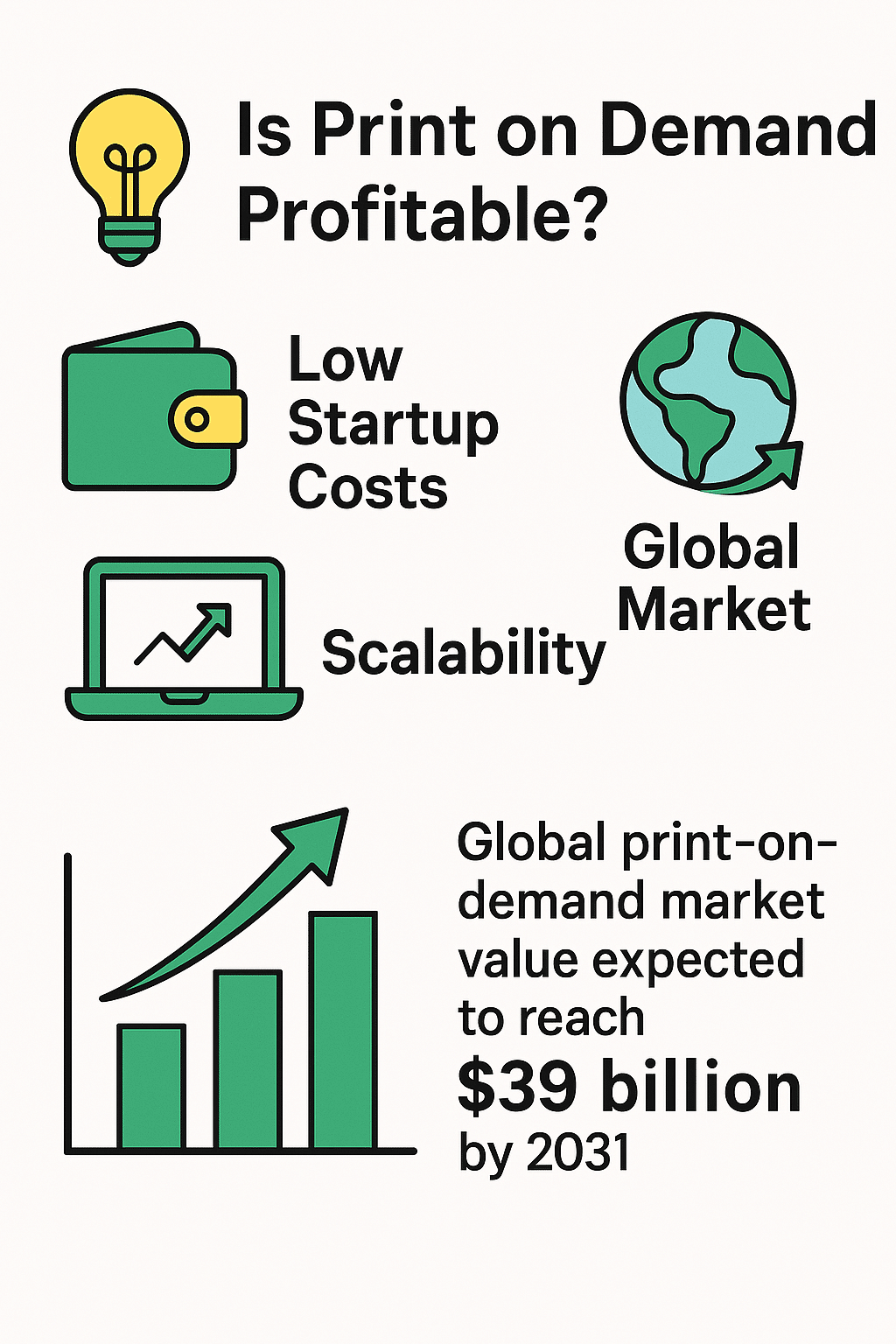
The print on demand market has grown steadily over the past few years, and 2025 is no exception. According to MarketWatch, the global POD industry is projected to reach over $39 billion by 2030, fueled by creators, side hustlers, and ecommerce brands looking to customize everything from apparel to home goods.
But growth doesn’t always guarantee personal success. So, how profitable is print on demand in 2025 — really?
Let’s look at the numbers. On average, print on demand sellers earn a 15% to 30% profit margin on each sale, depending on the product and platform.
That means if you’re selling a t-shirt for ₹999, your profit might be anywhere between ₹150–₹300 per order. Now multiply that by 100 or 500 orders a month — and you start to see real income potential.
Of course, not every store hits those numbers. Profitability depends on your niche, marketing, pricing, and the quality of your designs. But for those who treat POD like a business — not a side experiment — it’s still a very real and scalable model.
And here’s something worth noting: unlike traditional dropshipping, POD gives you more creative control. You’re not just reselling what others are already pushing — you’re building your own brand with original designs. That brand equity becomes a long-term asset.
Now let’s learn how exactly does POD make money, and what separates a profitable POD store from one that just breaks even?
How Print on Demand Makes Money
At its core, the print on demand model is simple: you design a product, list it on your store, and when someone places an order, a third-party supplier prints and ships it on your behalf.
You only pay the supplier after the customer has paid you — which means no upfront inventory costs.
But how does the profit actually work?
Let’s break it down with an example.
Say you’re selling a custom hoodie:
Retail price: ₹2,499
Base cost (supplier + printing + shipping): ₹1,699
Your profit: ₹800 per sale
This is where your print on demand profit margin comes in. Depending on what you’re selling — t-shirts, mugs, posters, or journals — the margin will vary.
Apparel usually has slimmer margins than wall art or phone cases, but that’s balanced by higher demand and repeat purchase potential. Most POD sellers operate within a 15–30% profit margin, though some creators with niche designs or high perceived value can charge more and stretch that to 40–50%.
And the best part? Once your product is designed and listed, it can generate income passively — as long as traffic is flowing. Many successful POD sellers scale by launching more products, testing new niches, and marketing consistently.
Want to make the most out of your profit margin? You’ll need to pay attention to a few key factors — and we’re covering those next.
Key Factors That Affect Profitability

Not all POD stores are created equal. Some barely make a sale, while others grow into full-time businesses. So what separates the two?
Here are the biggest factors that impact your print on demand profitability in 2025:
1. Niche Selection
Picking a profitable niche is half the battle. Generic products rarely stand out. But a hyper-specific store — like “sci-fi themed yoga apparel” or “plant mom mugs” — speaks directly to a community, and that builds brand loyalty fast.
Niche = Focus = Better conversion rates.
2. Product Pricing
It’s tempting to undercut competitors, but pricing too low eats into your profits fast. The key is to price for value, not just cost. If your product looks premium and solves a specific problem (or sparks an emotional connection), you can charge more.
Remember: customers don’t just pay for the product — they pay for the brand, the story, and the experience.
3. Design Quality
Design is everything in POD. If your visuals look dated, cluttered, or ripped from free libraries, customers will scroll right past. Invest time in creating original, clean, and trend-aware designs — or hire someone who can.
Tools like Canva, Adobe Illustrator, and Kittl can help — even if you’re not a pro.
4. Fulfillment Partner & Shipping Costs
Your choice of POD platform directly affects your base costs and delivery speed — which in turn affects profitability. Some platforms charge higher base prices but offer better quality and faster shipping.
For example:
Printful and Printify are global leaders, but slightly pricier.
Blinkstore and Qikink are better suited for Indian sellers, with local shipping and lower costs.
5. Marketing & Traffic
No traffic = no sales.
Even the best-designed product won’t sell if no one sees it. Profitable stores put effort into:
Running paid ads (Instagram, Facebook, Google)
Building social media presence
Email marketing and retargeting
The more targeted your audience, the lower your ad spend and the higher your return.
Best Print on Demand Websites to Start With
With so many print on demand platforms available, it can be hard to know which one to choose — especially if you’re just getting started. The truth is, there’s no one-size-fits-all answer.
The best print on demand websites depend on where you’re selling, what you’re selling, and who you’re selling to.
That said, here are some of the top options in 2025 that stand out for their ease of use, quality, and seller-friendly features:
Printful
One of the most popular global POD platforms. Offers a wide range of products (t-shirts, mugs, home decor, etc.) and seamless integration with Shopify, Etsy, and other ecommerce platforms.
- High product quality
- Global shipping
- Built-in branding options
- Slightly higher base prices
Best for: Creators focused on quality and brand experience
Printify
Another global leader, but more affordable than Printful. It connects you to a network of print providers, so pricing and shipping may vary by region.
- Lower base costs
- Wide product selection
- Integration with major ecommerce platforms
- Some variance in quality depending on print partner
Best for: Sellers looking for better margins and variety
Gelato
Gelato is growing fast — especially in Europe and Asia. It focuses on local production and fast delivery by printing near the customer.
- Faster delivery through local print hubs
- Eco-friendly practices
- Fewer product options (but high-quality)
Best for: Global brands that want speed + sustainability
Blinkstore (India)
A great option for Indian sellers. Blinkstore allows you to create a storefront, upload designs, and sell products like apparel, mugs, and more — all with local production and delivery.
- No upfront cost
- Built for the Indian market
- Easy for beginners
- Limited to Indian customers (for now)
Best for: Indian creators and students testing the POD model locally
Teespring (now Spring)
A platform for creators and influencers to sell merch. It handles everything — you just design and promote. Works best when paired with social platforms like YouTube, Instagram, or TikTok.
- Creator-focused
- Good for personal brands
- Limited storefront customization
Best for: Influencers or content creators selling branded merch
No matter which platform you choose, make sure it aligns with your goals. Want full control and brand building? Go with Shopify + Printful. Want a low-risk way to test ideas in India? Blinkstore might be your best bet.
Now let’s talk about how to actually increase your profits — even in a competitive market.
Tips to Make Print on Demand More Profitable

Print on demand is low-risk to start — but that doesn’t mean profits come easy. The difference between a store that breaks even and one that scales is all in the details. Here are some proven ways to make your POD business more profitable in 2025:
- ✅ Sell to a Niche, Not Everyone
The quickest way to lose money? Selling generic designs to a generic audience. The quickest way to stand out? Get hyper-specific. Whether it’s cat-themed notebooks for teachers or minimalist fitness apparel for moms, niche stores convert better and build loyal customers faster. - ✅ Use High-Margin Products
Not all products give you the same profit margin. Apparel has thinner margins compared to items like posters, journals, or digital downloads (if you offer those too). Start by offering 2–3 core products with strong margins, then expand based on what sells. - ✅Bundle Products Together
Instead of selling a single mug or shirt, try bundles: a mug + t-shirt set, or a 3-poster combo. Bundling increases your average order value — and helps offset ad costs. - ✅ Improve Your Product Images
Great designs aren’t enough — they need to look great too. Use professional mockups or real photos if possible. A high-quality image can make or break a sale. Tools like Placeit and Canva can help you create polished visuals even without design experience. - ✅ Leverage Social Proof
Customer reviews, user-generated photos, or simple “100+ sold this month” badges can massively boost conversions. Even if you’re just starting out, offer a few early orders to friends or followers in exchange for feedback and photos. - ✅ Track Your Metrics
Use tools like Google Analytics, Shopify reports, or Meta Ads Manager to track what’s working. Look at: Best-selling products - Cost per conversion
- Cart abandonment rates
- Knowing your numbers lets you cut what’s not working and double down on what is.
Common Mistakes That Hurt Profitability
Even with the best designs and a solid platform, small missteps can eat into your profits. Here are some common traps that new POD sellers fall into — and how to avoid them.- ❌ Underpricing Your Products
A common mistake is trying to compete purely on price. But remember, you’re running a business — not a discount bin. Don’t be afraid to price your products to reflect their value, especially if you’re targeting a niche audience. - ❌ Poor Product Mockups
No matter how good your design is, if the product images look low-effort or outdated, it kills the sale. Invest in good mockups that match your audience’s aesthetic — it makes a real difference. - ❌ Ignoring Shipping Time
If you’re using international suppliers to sell locally (especially in India), long shipping times can lead to refunds and unhappy customers. Always check delivery timelines — and communicate them clearly on your store. - ❌ Copy-Paste Designs
Using free clipart or repeating what’s already out there is a fast way to blend in — not stand out. Invest in original, high-quality artwork or work with designers to bring fresh ideas to life. - ❌ Giving Up Too Early
Many creators expect overnight success. But print on demand is like any other business — it takes testing, iterating, and consistent effort. Stick with it, learn from what doesn’t work, and keep improving.
Frequently Asked Questions (FAQs)
1. How profitable is print on demand?
Print on demand typically has profit margins ranging from 15% to 30%, depending on your product, pricing, and platform. Some sellers scale to full-time income by launching multiple high-converting designs and optimizing their marketing.
2. Is print on demand profitable in India 2025?
Yes, it can be. India’s ecommerce market is growing rapidly, and platforms like Blinkstore and Qikink make it easier to sell POD products locally without relying on international shipping. The key is finding a niche and keeping costs low while offering value.
3. Is print on demand profitable for beginners?
It’s beginner-friendly and low-risk — but not effortless. Beginners who research, pick a niche, and focus on quality can absolutely build a profitable POD store. Starting with fewer products and testing what works is a smart approach.
4. Is print on demand profitable in 2025?
Yes, the model still works well in 2025 — but with more competition, success depends on doing the basics well: great design, smart pricing, niche focus, and effective marketing. The opportunity is still big for those willing to treat it like a real business.
Conclusion: Is POD Right for You?
Print on demand remains one of the best low-barrier ways to start an ecommerce business in 2025 — especially if you’re creative, niche-focused, and willing to learn.
With the right tools and strategy, it’s absolutely possible to build a store that not only covers your costs, but becomes a real income stream.
Whether you’re just starting or looking to scale, now’s the time to get in — before the next wave of creators floods the market.

